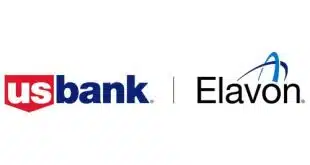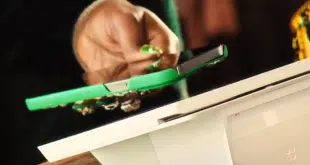Acquiring
By Jim Daly
Volumes have been written about how Apple Pay benefits, or doesn’t benefit, consumers, merchants, card issuers, and even payment networks. But what about merchant acquirers?
Train a cold eye on the new Apple Pay mobile-payment service for Apple Inc.’s recently introduced iPhone 6 models and the upcoming Apple Watch, and you can find plenty of holes. On the consumer side, there is no loyalty program, nor does Apple readily tell iPhone 6 users every place where they can tap their devices to pay.
Merchants get no price breaks for accepting Apple Pay, and at the very least they have to think about adopting an unproven service from a company whose smart phones and mobile operating system command less than half of the U.S. market. They’ll also have to install point-of-sale terminals that can process contactless transactions employing near-field communication (NFC) radio technology.
And there are nagging security worries, despite Apple Pay’s electronic fortress of tokens and biometrics. Just days before the massive computer maker and iTunes developer unveiled Apple Pay on Sept. 9, it suffered an embarrassing security breach in its iCloud service that resulted in nude photos of some celebrities going public on the Web.
Acquirers also have seen Apple Pay’s older rivals, Google Inc.’s Google Wallet and the Softcard (formerly Isis) wallet struggle to get consumer and merchant adoption. With the major exceptions of PayPal Inc.’s wallet and the closed-loop Starbucks Corp. wallet, most digital wallets are used and accepted by tech-oriented consumer and merchant niches. The common perception is that they don’t do anything better or faster than swiping an old-fashioned magnetic-stripe credit or debit card.
More Volume
So for mega-merchant acquirers down to the smallest independent sales organization, offering Apple Pay may not be a slam dunk, despite all the hoopla in 2014’s last quarter. But acquirers sense things could change quickly.
“Prior to Apple Pay, I have been sour on mobile wallets because I can still pull out a piece of plastic,” says Rob Bertke, senior vice president of research and development at Sage Payment Solutions, McLean, Va.
Then again, forgoing the service altogether or giving it scant marketing support may very well leave an acquirer or ISO behind when the long-idling mobile-wallet train, with Apple now the figurative locomotive, finally leaves the station. Acquirers are hopeful that Apple Pay can bring them more revenue-generating transactions, some of which would otherwise go to cash.
Plus, acquirers might be able to cut their fraud losses at least a bit. Apple Pay relies on tokens to authenticate the device and secure each transaction. And the Touch ID system that is part of Apple’s new iOS 8 operating system records an iPhone 6 user’s fingerprint, which is verified by touch with each Apple Pay transaction. So Apple Pay brings to the fore the latest in consumer electronic-payment security.
What’s more, the coming of Europay-MasterCard-Visa (EMV) chip card payments will simultaneously spur a vast increase in NFC-equipped point-of-sale terminals, which could make accepting Apple Pay a no-brainer for many merchants.
Another argument in the why-not category is that acquirers and merchants won’t be paying extra for accepting Apple Pay. Credit card issuers will be assessed 0.15% of the transaction (15 basis points), and debit card issuers 0.5 cents, for what amounts to a security guarantee from Apple.
And don’t forget those 800 million users of Apple’s iTunes digital music and entertainment service. The credit and debit cards funding a majority of those accounts could be automatically enlisted as default payment vehicles for Apple Pay.
Apple also makes it easy for iPhone 6 users to add more cards backing Apple Pay. All they have to do is snap pictures of them with the phone’s camera, and Apple uploads the images to the issuer for verification. Then they’re added to Apple’s Passbook app, which accesses Apple Pay.
Perhaps it’s Apple’s renowned ability to innovate and improve existing technology that’s the biggest reason of all for acquirers to support Apple Pay. Apple’s iPod music player, iPhone smart phone, and iPad tablet computer were not the first products in their respective categories, but they all became market-changing mega-hits.
“Any time Apple does anything, the level of spending and investment goes up 10 times by its competitors and people in its space,” says Ruston Miles, founder and chief of product innovation at Bluefin Payment Systems, a Tulsa, Okla.-based merchant processor.
Thus, the rather simple prospect of more transactions is shaping up as the top reason for acquirers to add Apple Pay to their product listings.
“Obviously Apple Pay is a way consumers want to pay,” so acquirers would be wise to support it, says Barry McCarthy, executive vice president and group head of Consumer and Network Solutions at leading payment processor First Data Corp., Atlanta. “Acquirers, processors win because there is more volume.”
Adds James Anderson, senior vice president in emerging payments at MasterCard Inc.: “Because [acquirers] sit between the merchants and us [consumers], their interest is essentially volume.”
‘First Movers’
But others still aren’t so sure that all the fuss about Apple Pay is worth it. Rod Katzfey, vice president of Southborough, Mass.-based processor Credorax Inc., notes that Apple Pay leaves out users of Google Inc.’s market-leading Android mobile operating system.
“I think it [Apple Pay] is a good technology [but] it’s another wallet that is segmented to specific users,” Katzfey says.
Sage’s Bertke admits Apple Pay won’t win every merchant’s heart.
“It’s like the Discover card, most merchants will feel they have to take it … and others won’t care so much,” he says.
Bertke says Sage has received calls from tech-oriented retailers and other “first movers” in its merchant portfolio asking about turning on Apple Pay as quickly as possible. But he adds: “I can tell you it is not the majority.”
To get that enticing added transaction volume, many acquirers are likely to emphasize the close relationship between EMV and mobile wallets. Many, if not the majority, of EMV-capable POS terminals are expected to support contactless chip card payments in addition to contact chip card transactions, which likely means they also will support contactless NFC payments. About 220,000 U.S. merchant locations supported contactless payments as of October.
The card industry’s Payments Security Task Force recently estimated, based on projections from many of the nation’s largest acquirers, that 47% of U.S. payment terminals will be enabled for EMV by the end of 2015, though how many of them will have contactless capability is unclear.
By quickly capturing the mobile-payments spotlight, Apple Pay also could help the U.S. put the vulnerable mag-stripe payment card out to pasture. Apple Pay went live a year before the general-purpose card networks’ so-called liability shift takes effect in October 2015. That’s when the party to a card transaction, merchant or issuer, that doesn’t support EMV will hold the bag for counterfeit card fraud.
Security is likely to be the big selling point for chip cards with consumers, and by extension a selling point for acquirers to push the EMV conversion and also play up the suddenly brightening prospects for mobile payments.
Asked which of nine features are important when selecting which card to use, 85% of 608 consumers who had identified themselves as mobile POS users within the past 12 months said “security against identity fraud,” more than any other choice, according to a November 2013 study by Javelin Strategy & Research, Pleasanton, Calif.
Apple Pay, with its combination of tokens and biometrics, goes beyond EMV even though it will rely on EMV infrastructure.
“It really changes the dialog around the authentication of a consumer paying,” says Marianne Johnson, executive vice president and global head of product and innovation at Atlanta-based Elavon, the acquiring arm of U.S. Bancorp. “Apple Pay at the end of the day is a form factor. It changes the conversation from card-present and card-not-present to what level did the consumer authenticate at … that’s a more secure transaction than a card transaction because of its multifactored authentication, including biometrics.”
In addition to its technological security, Apple is also promoting the fact that it won’t be tracking consumer purchases—a sensitive issue in this era of data breaches. Critics, however, have noted that this lack of consumer tracking limits merchants’ ability to selectively target customers for offers based on spending patterns.
‘The Real Game Changer’
While big merchants are pushing well into their EMV conversion schedules, many small merchants are still barely aware of EMV, and some have made decisions to hold off on terminal upgrades despite the added liability risk next year. EMV directly attacks far less than half of all card-related fraud, so acquirers are looking for something beyond security to sell EMV and NFC-based mobile payments.
“Secreting your terminal is not enough of a value proposition,” Bluefin’s Miles says.
Bluefin’s chief marketing and strategy officer, Jeff Schroeder, pipes in that security is “really a conversation starter,” but EMV/NFC terminals can do much more. In addition to payments, NFC facilitates merchants’ loyalty programs and the provisioning of digital coupons.
As noted, that’s not even part of Apple Pay, at least not yet, and how big of a liability the lack of a loyalty feature will be for Apple Pay isn’t known yet. But mobile-wallet users highly value loyalty programs: 79% of Javelin’s mobile users ranked “rewards earned for purchases” as their No. 2 feature.
Merchants that do accept Apple Pay, however, will be able to enhance their customers’ payment experience, according to First Data’s McCarthy. Apple Pay doesn’t require the user to open the Passbook app, and the NFC technology facilitates payment with a quick tap at the terminal.
“The real game changer on Apple Pay is the incredible consumer experience,” McCarthy says. “Making a payment on Apple Pay is simpler than paying with a magnetic-stripe card.”
Of the two EMV POS transaction types, contact and contactless, the latter is the faster version.
“For the ISOs, the other thing that this [Apple Pay] does is it validates for point-of-sale [that] the primary digital-payment method will be contactless,” says MasterCard’s Anderson.
Sage’s Bertke told Digital Transactions at the big Money20/20 conference last month in Las Vegas that “as an acquirer, we like Apple Pay for a few reasons. One, it’s moving that agenda forward for NFC and mobile wallets.”
His colleague Ray Merk, vice president of business development, says Apple has changed the entire conversation about NFC. At the 2013 Money20/20 conference, “I heard NFC—‘not for commerce’—and there was this wave of people bashing it,” Merk says.
Elavon’s Johnson notes that “NFC, as you know, has been around a long time. You’ve got new life into that protocol.”
The In-App Option
Less obvious to consumers, Apple Pay also gives merchant acquirers with the technological wherewithal a way to potentially deepen their relationships with merchants and reduce merchants’ proclivities to bolt to the next acquirer with a lower discount rate.
Apple allows merchants to include Apple Pay in their mobile apps. Two acquirers taking advantage of this in-app feature are JPMorgan Chase & Co.’s Chase Paymentech processing subsidiary and First Data. Both have created software development kits (SDKs) for merchants and software developers to facilitate in-app Apple Pay payments.
Another acquirer taking advantage of Apple Pay in-app payments is Allentown, Pa.-based Harbortouch, whose portfolio includes 10,000 small, sit-down restaurants. Harbortouch in October released a consumer app called Perkwave that works with Apple Pay to let users pay for meals while they’re still sitting at the table.
The free app, available in Apple’s App store, addresses a pressing problem that will only get worse when EMV chip cards begin proliferating in the U.S. within the next couple of years, Jared Isaacman, Harbortouch’s chief executive, told this magazine’s sister publication, Digital Transactions News.
“We said we’re going to try to solve a real problem, and that problem is pay-at-table,” he said.
When the meal’s over and the server brings the tab, a customer with an iPhone that has the Perkwave app opens the app and scans a barcode appearing on the bill. Then he chooses the payment card he’s stored in Apple Pay, adds a tip, and receives an emailed receipt.
More than any mobile wallet so far, Apple Pay is presenting acquirers with a possible opportunity to build transaction volume at the dawn of the mobile-payments age.
“Really, with smart phones and tablets, the point of sale is now where the consumer is,” says Bluefin’s Miles.
At the very least, Apple Pay and mobile payments in general have acquiring executives fired up about their chosen profession. “It’s a wonderfully fun time to be a part of payments,” says Bertke.
—With additional reporting by John Stewart





